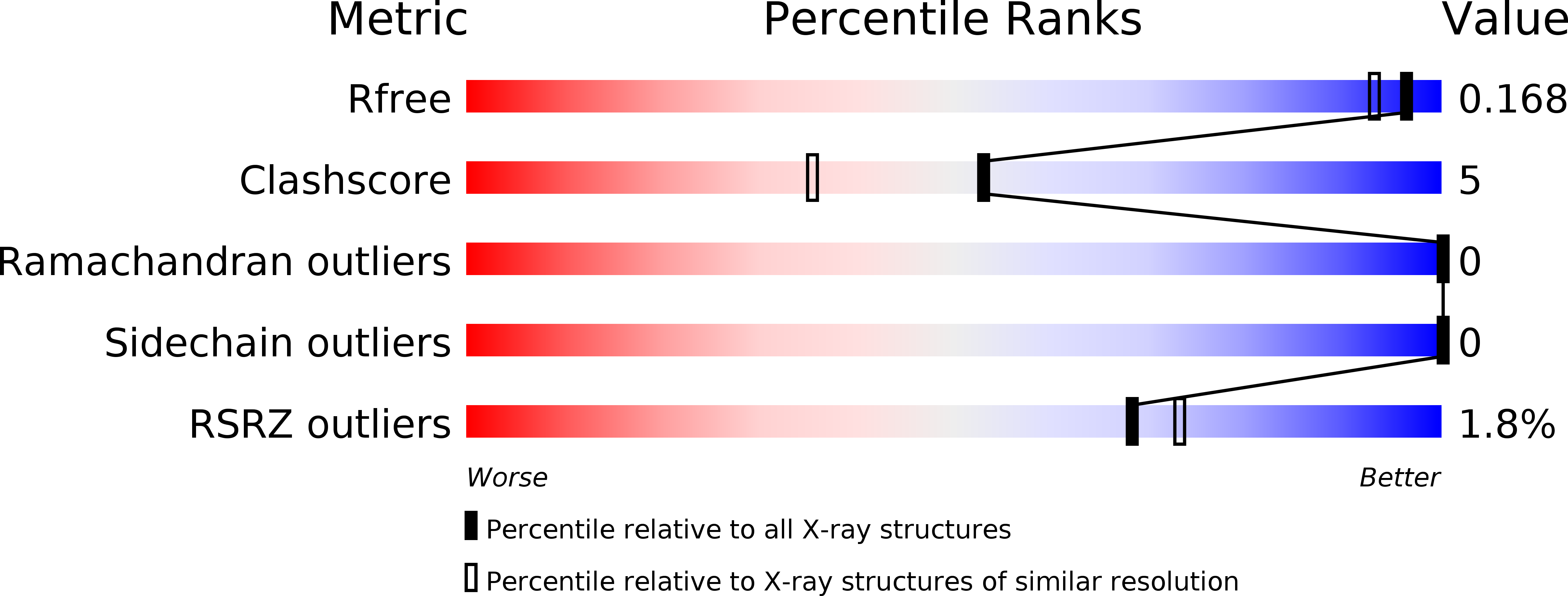
Deposition Date
2002-01-09
Release Date
2002-05-15
Last Version Date
2024-02-14
Entry Detail
PDB ID:
1KR7
Keywords:
Title:
Crystal structure of the nerve tissue mini-hemoglobin from the nemertean worm Cerebratulus lacteus
Biological Source:
Source Organism:
Cerebratulus lacteus (Taxon ID: 6221)
Host Organism:
Method Details:
Experimental Method:
Resolution:
1.50 Å
R-Value Free:
0.18
R-Value Work:
0.15
R-Value Observed:
0.15
Space Group:
P 21 21 21


